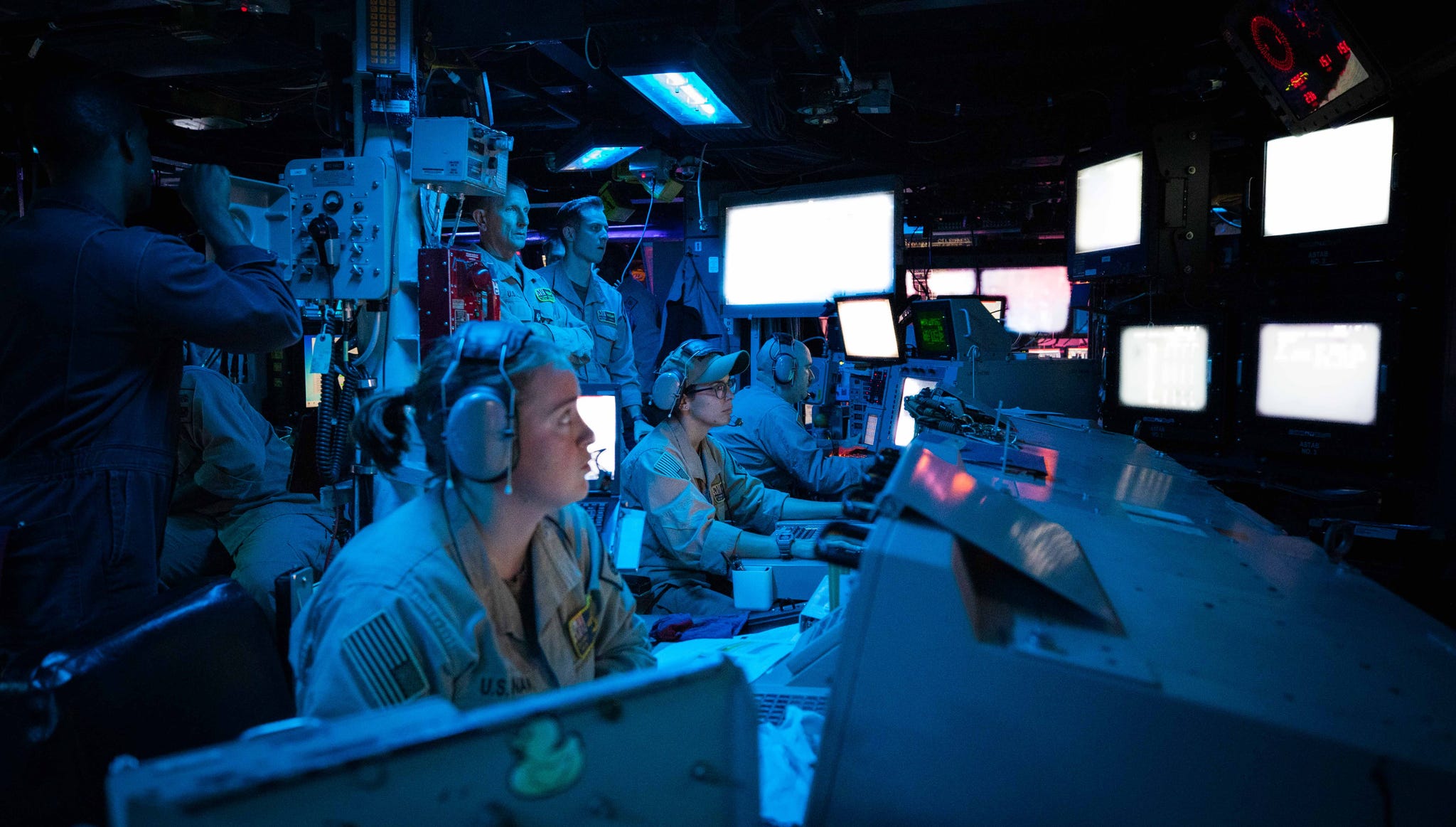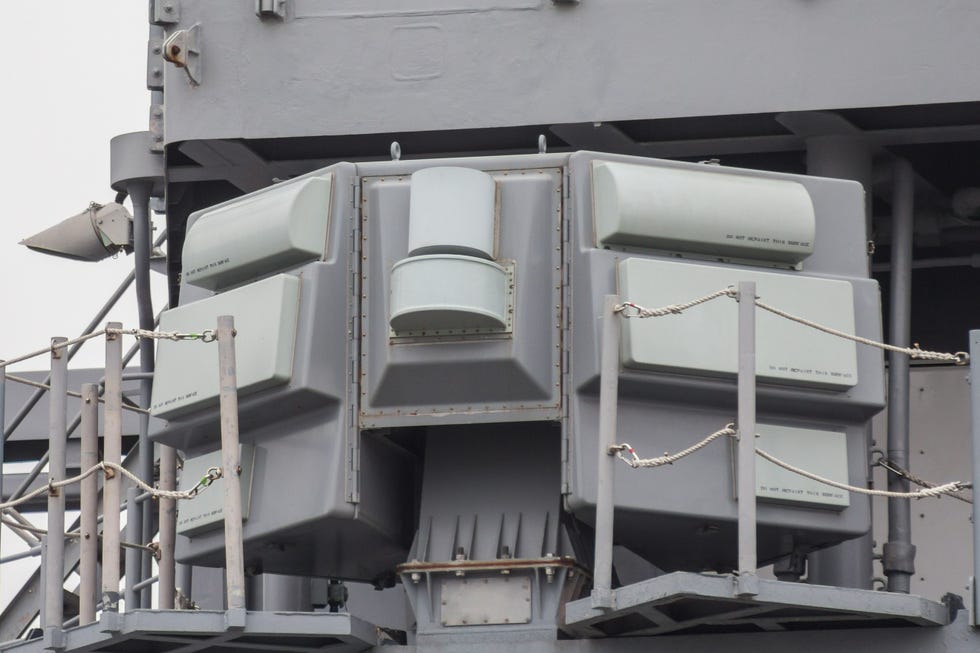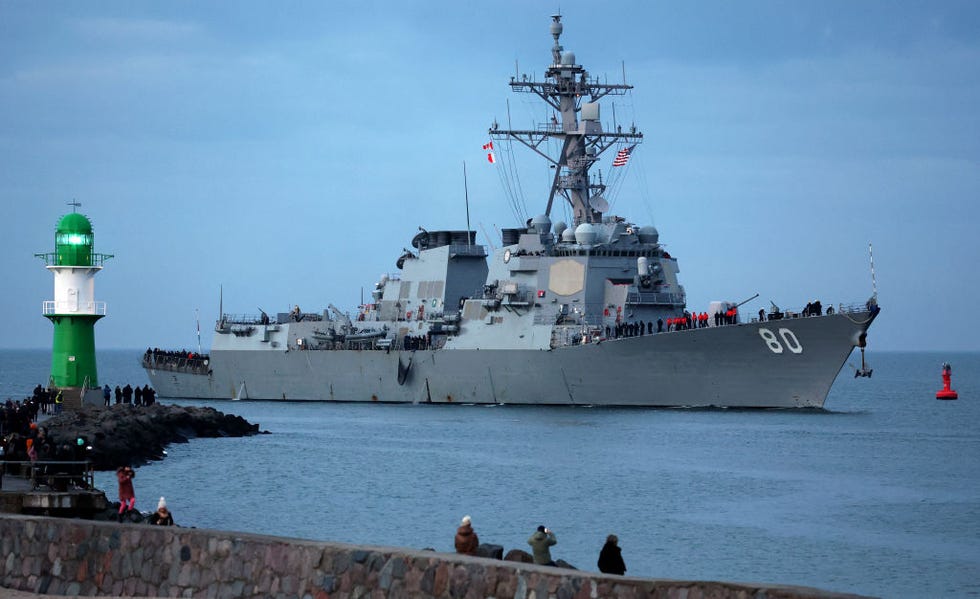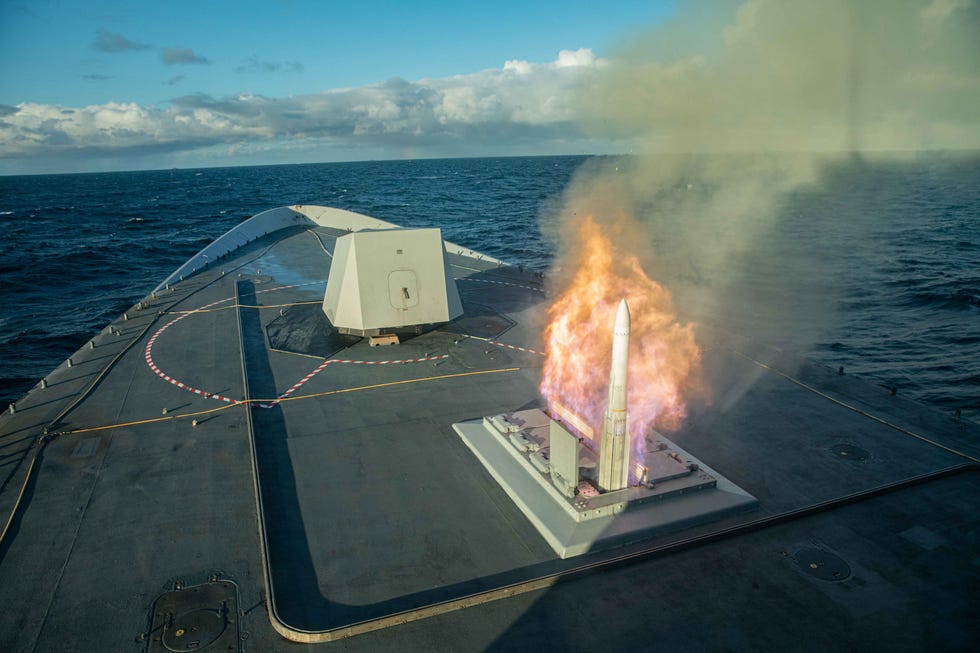KYLE MIZOKAMI

The undeclared missile war between Yemen’s Houthi rebels and the United States Navy has made one thing irrefutably clear: the tens of billions of dollars the service has poured into protecting its warships has paid off.
The U.S. is allied with most countries in the Red Sea region, but the recently declared terrorist group, the Houthis, is making trouble by hijacking commercial ships and lobbing missiles at them as they sail past their coastline. The rebels are backed by the larger, expansionist regional power, Iran, which uses the Houthis as a proxy to attack other regional powers, arming and equipping them with weapons including anti-ship and ballistic missiles.
Following the major attack on American ally Israel by the terrorist group Hamas, Houthi rebels have entered the war by launching drones and firing missiles at Israel. These drones and missiles take a path over the Red Sea—the flattest stretch of terrain in the region—to simplify their route and ensure they reach their target. In their path lie U.S. Navy destroyers—three destroyers, as of December 18—acting to defend America’s ally from these long-range attacks.
After the U.S. destroyers thwarted a number of Houthi attacks, the rebels turned their missiles on the ships themselves. Since then, American guided-missile destroyers have swatted down numerous drones and missiles using radar and missile systems designed to protect aircraft carriers from sophisticated mass attacks—and the fight isn’t even close.
Here’s how the air-defense systems on U.S. destroyers work.

US Navy photo
Sailors assigned to the destroyer USS Carney stand watch in the ship’s Combat Information Center during an operation to defeat a combination of Houthi missiles and unmanned aerial vehicles, October 19, 2023.
Advertisement - Continue Reading Below
Detection

US Navy photo
The first hint of missile attack would likely come from the AN/SLQ-32, which listens for enemy radar emissions.
In our scenario, we’re on an Arleigh Burke-class guided-missile destroyer. The first hint of trouble comes via the AN/SLQ-32 electronic combat system, commonly known as “Slick 32.” Most anti-ship missiles use a nose-mounted radar to detect and home in on ships at sea. Slick 32 is designed to search for those radar emissions, which may even become detectable before the ship’s radars can detect the missile itself.
In milliseconds, Slick 32 detects the radar emissions, sounds the alarm, and compares them to a digital library of emissions to identify the type of missile. The system then passes the information, along with the missile’s rough heading, to its human operators. The operators conclude the missile is on a collision course with the ship and that an attack is in progress.
Tracking

A U.S. Navy guided-missile destroyer uses its SPY-1D radar, the hexagonal-shaped plate seen just below the bridge, to detect incoming threats.
As the missile closes the gap with the ship, it comes into range on the destroyer’s SPY-1D radar. The Houthi missile is 1970s-era technology, and the SPY-1D picks it up right away. The missile is barreling in at 600 mph, just 30 feet above the surface of the ocean. As advanced as it is, the ship’s radar can only detect targets in its line of sight, and the missile’s low altitude, along with the curvature of Earth, means the missile only becomes detectable at 30 miles away. Math tells us that, given the speed of the missile and its distance to the ship, the crew only has three minutes to shoot the missile down.
Engagement: Round 1

US Navy photo
An SM-2 missile rises from an armored silo aboard the destroyer USS McCampbell, March 2019.
The destroyer crew decides to engage the missile at maximum range and selects the Standard SM-2 medium surface-to-air missile. The SM-2, first fielded in the 1980s, is an all-air-defense missile capable of engaging a wide spectrum of aerial threats, from low and slow cruise missiles to fast and high-flying fighter jets. The SM-2 is rocket powered, racing towards targets at Mach 3 and destroying them with a proximity fuze, high-explosive warhead.
The door of an Mk 41 vertical launch system swings open, and with a roar the SM-2 emerges from the bowels of the ship on a pillar of flames. In less than ten seconds, the SM-2 has turned 90 degrees and is speeding off in the direction of the incoming missile. Seconds later, a second silo door opens and another SM-2 tears off downrange, giving the destroyer two chances to shoot it down. Meanwhile, one of the destroyer’s three AN/SPG-62 fire control radars illuminates the incoming missile like a flashlight with electromagnetic energy, showing the SM-2s where to go.
As we understand them, every real-world engagement has begun and ended with SM-2 missiles intercepting the threat. But an Arleigh Burke-class destroyer has several layers of defenses, so to illustrate those, we’ll assume that both SM-2s failed to find their target.
Engagement: Round 2

An Evolved Sea Sparrow Missile rises from an Mk 41 silo on the Norwegian Frigate HNoMS Fridtjof Nansen during NATO exercise Formidable Shield, May 2021. Unlike most missiles, the ESSM is small enough to be packed four per silo.
Within seconds, the destroyer crew is aware the SM-2s failed to destroy the threat. The Houthi missile is still coming. The crew next chooses to engage with Evolved Sea Sparrow Missiles (ESSM), a short-range self-defense missile originally derived from the Sparrow air-to-air missile. Unlike other missiles, the smaller ESSMs are packed four missiles per Mk 41 silo. Two ESSMs leap away from an open silo, roaring away at Mach 4 and quickly picking up the incoming missile as it is bathed in energy from the AN/SPG-62.
At the same time, the U.S. destroyer hedges its bet by launching Nulka anti-missile decoys. Nulka, a joint U.S.-Australian system, is designed to be fired from the decks of warships under attack. Once fired, Nulka hovers in the air, presenting an alternative, decoy radar signature for an incoming missile. This process, known as seduction, is a so-called “soft kill” that doesn’t rely on actively destroying the missile, but merely luring it away from the intended target instead.
Engagement: Round 3

Miraculously, the ESSMs still fail to destroy the enemy missile. That’s okay, because there is a third layer of defense built into the destroyer: the Phalanx close-in weapon system. Consisting of both search and tracking radars linked to a six-barrel 20mm Gatling gun, Phalanx is a last-ditch defense designed to intercept missiles at just over two miles.
The Phalanx turret quickly rotates to orient itself against the incoming threat, and then with a roar like a chainsaw fires a quick burst of 20mm cannon shells. The half-dozen rounds of tungsten penetrators tear into the missile, shredding it in midair. The missile warhead detonates, creating a fireball and a shockwave half a mile from the ship—too far away to cause any harm.
No comments:
Post a Comment